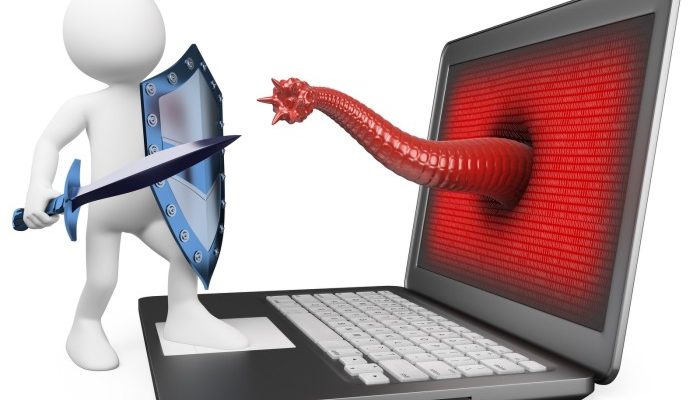Barely a day goes by without a new cyber-attack occurring somewhere in the world; such is the price that we pay for living in a globally and digitally connected age. This is a concern not just for large companies and transnational corporations, but also for the regular home Internet user who must deal with the results of a credit card hack or worse.
Despite what some media pundits suggest, no Internet-connected electronic device is safe from a hack, not even those once reputed to be safe and secure. This is partly due to the increasing connectedness of the world; partly due to the proliferation of cheap electronic and Internet-connected devices that are not as secure as they should be; and partly due to the expertise of hackers around the world with access to a variety of unique tools.
Attacks of this nature end up costing society dearly, as companies look to combat wave after wave of spam and malware using expensive enterprise-grade solutions. People feel the squeeze in terms of product price hikes and Internet slowdowns as a server somewhere deals with yet another denial of service attack or Trojan.
A World of Spam
Recent statistics conclude that spam emails make up around 14.5 billion messages a day on a global scale. This means that spam emails account for at least 45% of all email messages! In fact, some research suggests that it is even more. Whatever the conclusion of specific studies, spam is a global problem. For casual home users, spam is simply a daily occurrence with some attendant annoyance, but for large companies and businesses, spam is a huge problem.
For large businesses, spam is not only an annoyance; it also causes delays in network traffic if not filtered effectively. Add to this the fact that many spam emails disguise phishing attacks, links to malware sites, and malware executables, and the problem adds up to one big headache! Even though email access is still vital to the operation of most businesses, particularly in this global environment, it also means that all manner of nasties and viruses can breach security and become a problem. All it takes is for one employee to execute a single piece of malware, and the entire system can be subject to further attacks, delays, glitches and possibly even theft of important company details or customer credit card details.
Numerous anti-virus and anti-spam companies have built entire business models upon filtering and controlling spam and malware; such has been the problem on a global scale. But this is changing due to a number of smaller innovative companies offering unique protection that works for all businesses.
As computers have increased in power and virtual services have matured, people have come to look at the cloud as a real solution to many problems in business. Rather more complex than the thin client and mainframe infrastructure of the 1970s and 1980s, cloud-based computing has developed alongside the appetite for popular consumer devices that connect to the web over Wi-Fi networks. This increasing reliance on remote cloud services to store our information and serve people media has created great opportunities for companies seeking to develop and roll out sophisticated cloud-based spam and malware detection solutions. Once combined with modern developments in artificial intelligence, it represents an ideal solution for small to large companies.
Dealing with Malware and Spam Effectively and Affordably
Traditionally, hardware-based firewall security has been cost-prohibitive for all but the largest and richest companies and corporations. Hiring entire departments to deal effectively with hacks, spam and malware is expensive and drives the cost of products up for customers. But things are changing, as people come to rely more and more on cloud-based infrastructure to provide what they need.
A cloud-based software solution is an ideal method of combatting ever-increasing levels of spam and malware. Such cloud-based protection offers the following benefits to companies of up to one thousand users:
- Premium quality: An enterprise-grade solution for dealing with spam and malware that serves large companies around the clock. Such is the ever-increasing power of computing and hardware, that a cloud-based solution can reliably serve up to one thousand users in each company that chooses to use it as a method of filtering out and dealing with spam.
- Web-based: By using the power of the Web, these solutions offer intuitive administrator interfaces that allow the IT department of a company to change settings, analyze traffic and reports, and check on network and email activity within the company.
- Artificial Intelligence: The advances in artificial intelligence in recent years have been truly astounding. People are no longer relying on simple heuristic analysis to detect spam, but using artificial intelligence derived software that can detect up to 99.9 percent of spam. Many such cloud-based malware solutions even come with a detection percentage guarantee!
- Updates: Real-time updates are deployed in order to maintain an edge in detecting the latest spam and malware. This is the great benefit of using a software solution that is cloud-based and remote. The company can simply focus on work and let the remote third party update malware and spam detection whenever necessary. This gives companies major cost savings, because it means less time dealing with malware than ever before.
For companies that have had to rely on entire IT departments and expensive hardware to deal with spam and malware, a cloud-based solution is an ideal method for detecting, filtering and deal with spam and malware. It is cost-effective and easy to deploy. This means that the company can focus on what is really important rather than having to worry about malware attacks, having the IT person roll out another update, or getting expensive enterprise hardware solutions that are a hassle to maintain.

